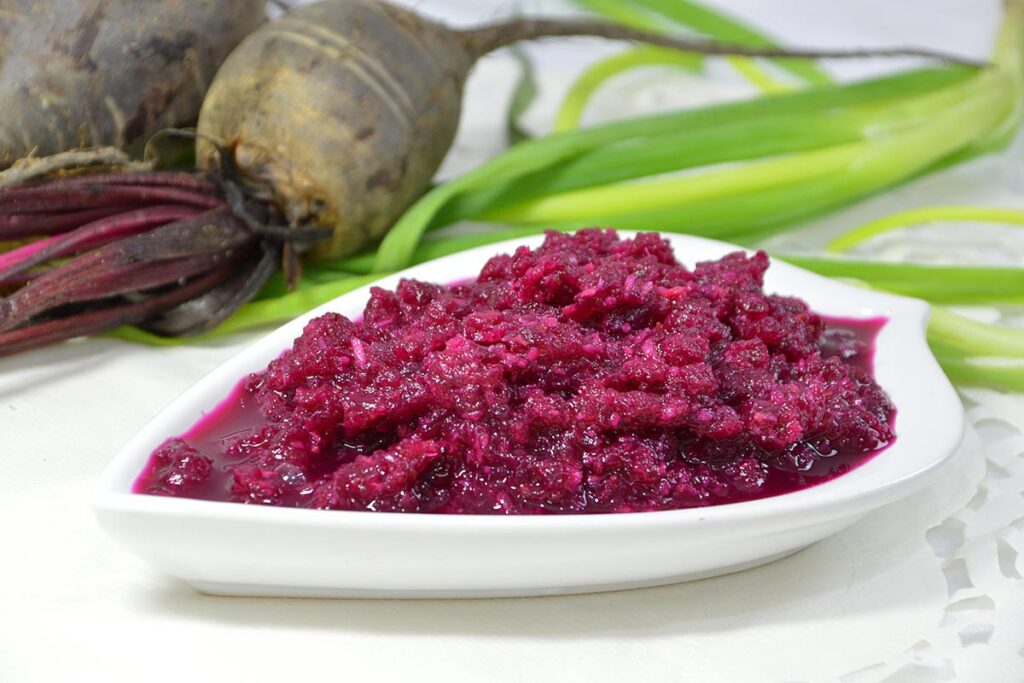
If you are looking for a strong maror that shocks your mouth and enlivens your spirit on Passover, this recipe is for you.
After watching my parents make this recipe every year, here is what I learned about how to make the best maror (in between gasps and tears):
- Go strong, or not at all.
- The potency of this dish hinges on the vinegar. If you wait five to 10 minutes after your horseradish root is grated to add the vinegar, the maror will be more powerful. If you add vinegar right away, you won’t get quite as much of a kick.
Even though this fresh maror is stronger than most, it still makes a good companion to gefilte fish or brisket during the seder meal (and will definitely wake you up if you’re falling asleep).
A few more things you need to know: I’m including a recipe for fresh beets, but if you use canned beets during this hectic run-up to the holiday, I certainly won’t judge. I’ll also leave the decision of when to add the vinegar entirely up to you.
One note of caution before you start: be careful! Open a window. Open two! Shield your face when lifting the food processor lid and think about wearing goggles to protect your eyes.
Despite the hazards involved in making a strong maror, this dish is well worth the time, effort and even tears you put into it. Have fun and chag sameach!
The maror that packs a punch
PrintEquipment
- 1 food processor
Ingredients
- 1 cup chopped beets, fresh or canned
- 12 oz fresh horseradish root (from a health-food store or produce market)
- 2 tbsp apple cider vinegar
- Pinch of salt
- ¼ cup water
Instructions
Boil your beets:
- Wash beets under running water.
- Cut off beet greens, leaving at least 1 inch to reduce the amount of red juice leaking out while beets are cooking.
- Boil 20 to 40 minutes until beets are tender when pierced. The larger the beets, the longer they will take to cook.
- Rinse under cold water and rub off the skins. Take care not to splash too much (this is what aprons are for)! Wipe up any stains you see ASAP.
- Chop beets and set aside.
Prepare maror:
- Peel the horseradish root with a vegetable peeler, using a knife for the tough spots.
- Cut or slice the horseradish into chunks or pieces so they can fit through the opening of your food processor.
- Use the grating attachment to shred the horseradish.
- After the horseradish has been shredded, exchange the grater for the S-shaped blade.
- It’s time for the vinegar decision! For stronger maror, let it sit for 5-10 minutes. Otherwise, wait 2-3 minutes.
- Add the beets and process the mixture until combined, stopping before the mixture gets creamy.
- Add the other ingredients and combine in the food processor.
- Store the maror in an airtight glass container in your refrigerator. It’s best if you can serve the maror at your seder within 3 hours or less of making it. You can keep whatever’s left over in your refrigerator for 3-4 weeks.
Originally Published Mar 31, 2023 06:53PM EDT
